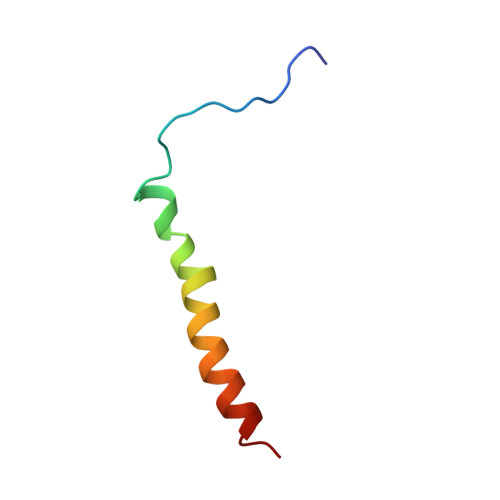Structure of FGFR3 Transmembrane Domain Dimer: Implications for Signaling and Human Pathologies.
Bocharov, E.V., Lesovoy, D.M., Goncharuk, S.A., Goncharuk, M.V., Hristova, K., Arseniev, A.S.(2013) Structure 21: 2087-2093
- PubMed: 24120763
- DOI: https://doi.org/10.1016/j.str.2013.08.026
- Primary Citation of Related Structures:
2LZL - PubMed Abstract:
Fibroblast growth factor receptor 3 (FGFR3) transduces biochemical signals via lateral dimerization in the plasma membrane, and plays an important role in human development and disease. Eight different pathogenic mutations, implicated in cancers and growth disorders, have been identified in the FGFR3 transmembrane segment. Here, we describe the dimerization of the FGFR3 transmembrane domain in membrane-mimicking DPC/SDS (9/1) micelles. In the solved NMR structure, the two transmembrane helices pack into a symmetric left-handed dimer, with intermolecular stacking interactions occurring in the dimer central region. Some pathogenic mutations fall within the helix-helix interface, whereas others are located within a putative alternative interface. This implies that although the observed dimer structure is important for FGFR3 signaling, the mechanism of FGFR3-mediated transduction across the membrane is complex. We propose an FGFR3 signaling mechanism that is based on the solved structure, available structures of isolated soluble FGFR domains, and published biochemical and biophysical data.
- Department of Structural Biology, Shemyakin-Ovchinnikov Institute of Bioorganic Chemistry, Russian Academy of Sciences, Miklukho-Maklaya Street 16/10, Moscow 117997, Russian Federation. Electronic address: bon@nmr.ru.
Organizational Affiliation:
















